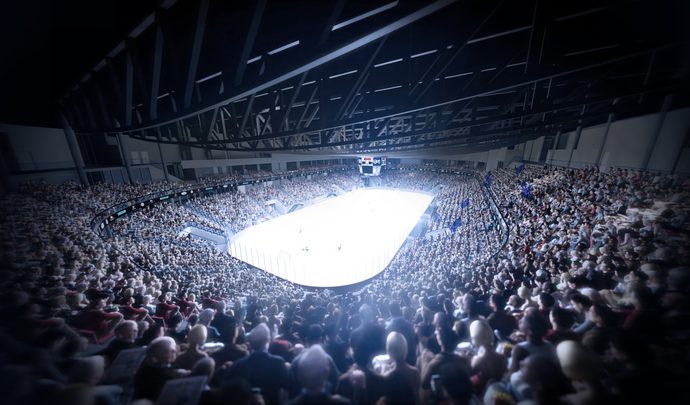New Jordal Amfi will use 100% renewable energy using innovative heating system
An ice rink originally built for the 1952 Winter Olympics in Oslo is being completely redeveloped to use zero fossil fuels.
The New Jordal Amfi, due to be completed in September 2019, will be used for professional hockey matches and community activities.
Working with the Norwegian University of Technology and Science, the municipality of Oslo is deliberately building the facility so that it’s as eco-friendly as possible. The stand-out feature of the ice rink is an innovative cooling system, which also heats the building using the excess warmth it produces when operational.
The decision to operate the facility using 100% renewable energy is in line with Oslo’s upcoming regulation that forbids all new buildings from using fossil fuel energy. The regulation comes into full force in 2020.

Oslo will also be the European Green Capital in 2019.
“The heat that will be created from the ice production system will deliver all the heat the building needs, and will also produce water,” Simen Bakken, from Oslo’s Department of Planning and Project, Culture and Sports Buildings, told The Sustainability Report.
“And it’s for practical purposes that we’re self-sufficient as we don’t have to use any extra energy. Even though the building is bigger (it will be 11,500sq m and have a capacity of 5,500) it will use one-third of the energy needed to power the original ice rink.”
Bakken said that while the initial costs for the €50m development were high due to the technology needed to convert the energy to heat and water, the venue would save money, particularly when factoring in its 60-year life expectancy.
As well as an eco-friendly finished product, the construction process had to be sustainable to fulfil the municipalities requirements. When the project was put out for tender, sustainability was “embedded in the specification”. Construction companies wishing to bid had to demonstrate fossil free machinery and adherence to the city’s code on sourcing building materials like concrete and steel.
“We did an analysis for how the stadium will be used,” added Bakken. “Younger players will use the rink 80% of the time, with a big professional match every second week. We needed to take that into consideration when we build this system. We are making it so we can adjust the insulation and heat the stadium according to use, which is very important in order to save energy.”










Leave a Comment
Your email address will not be published. Required fields are marked with *